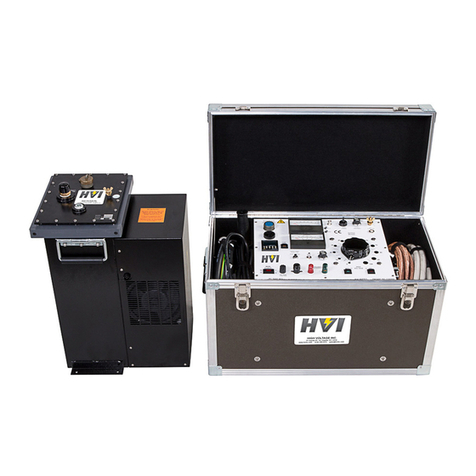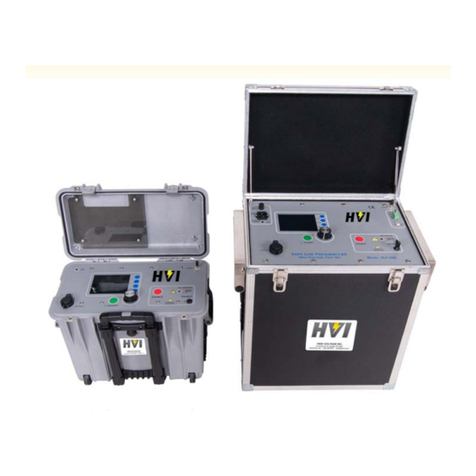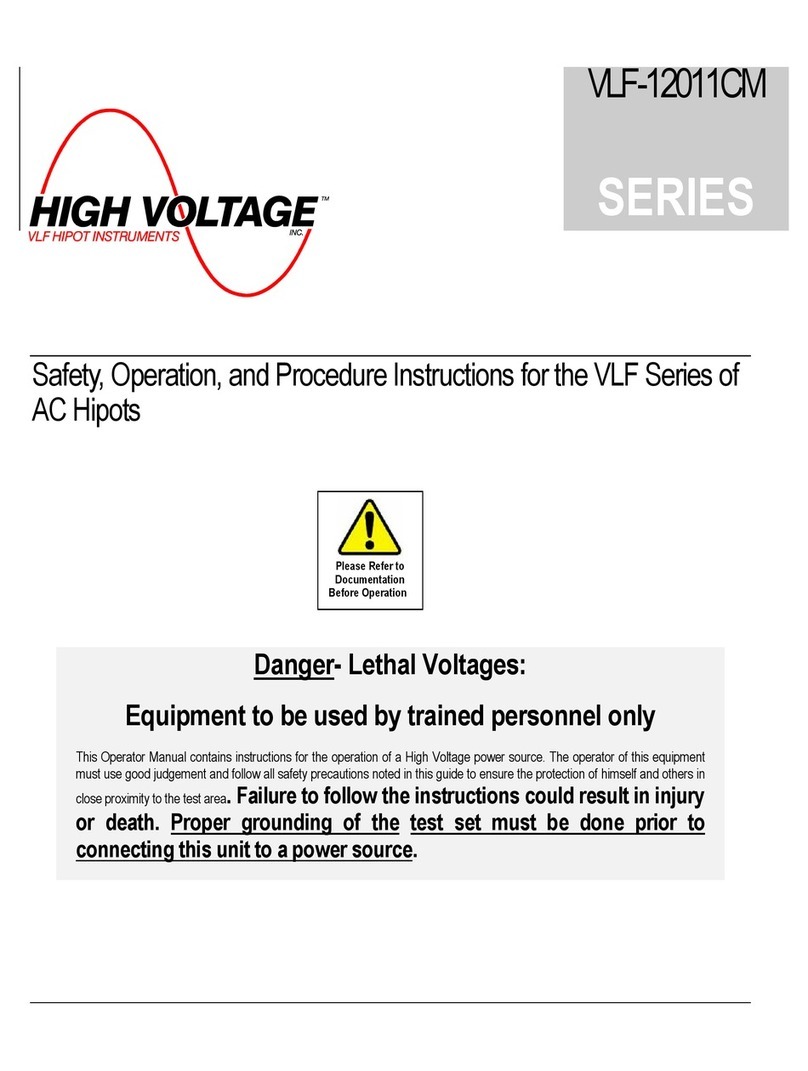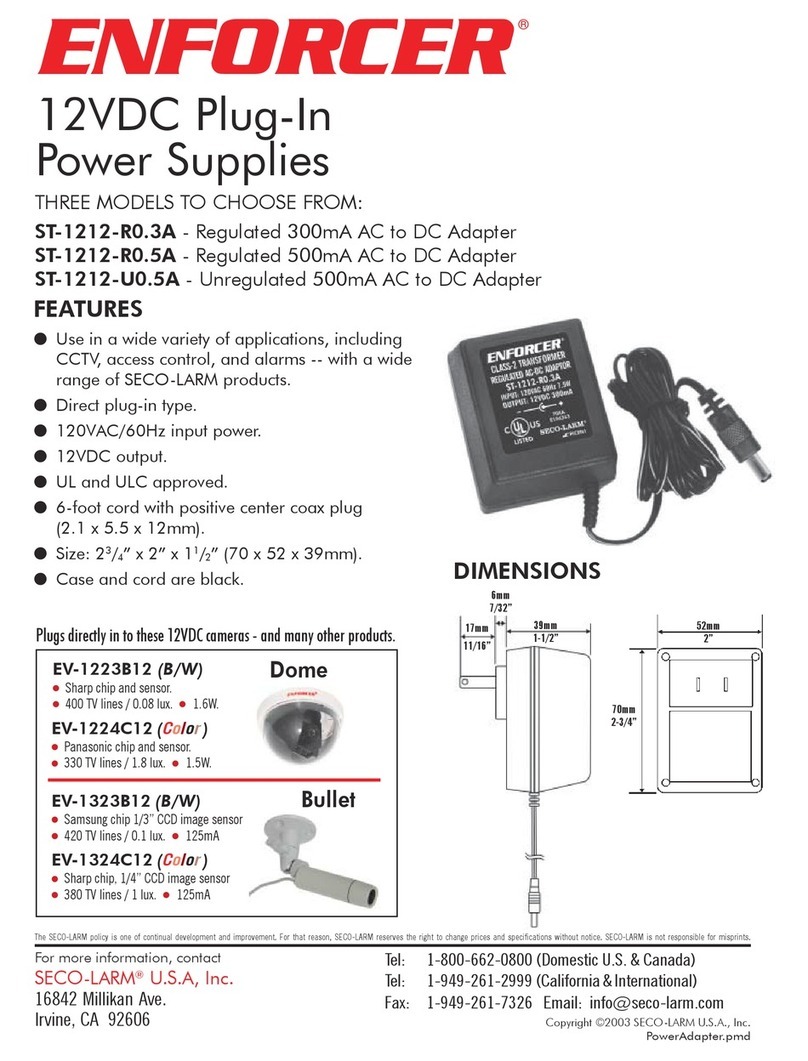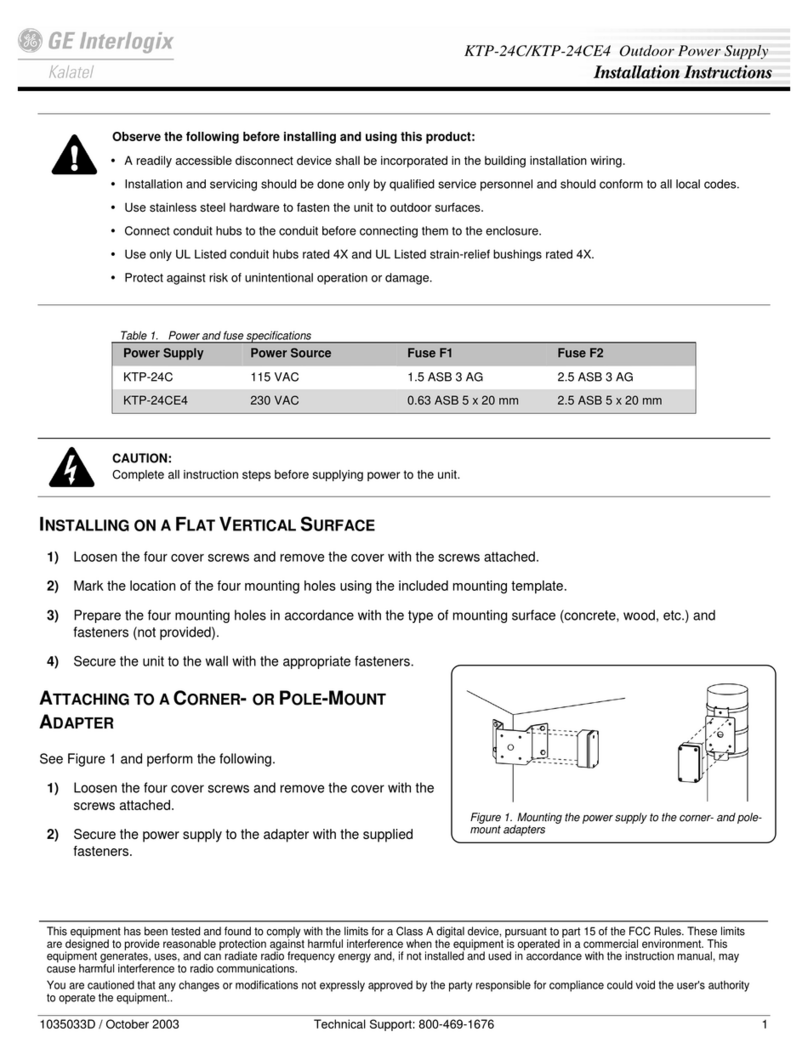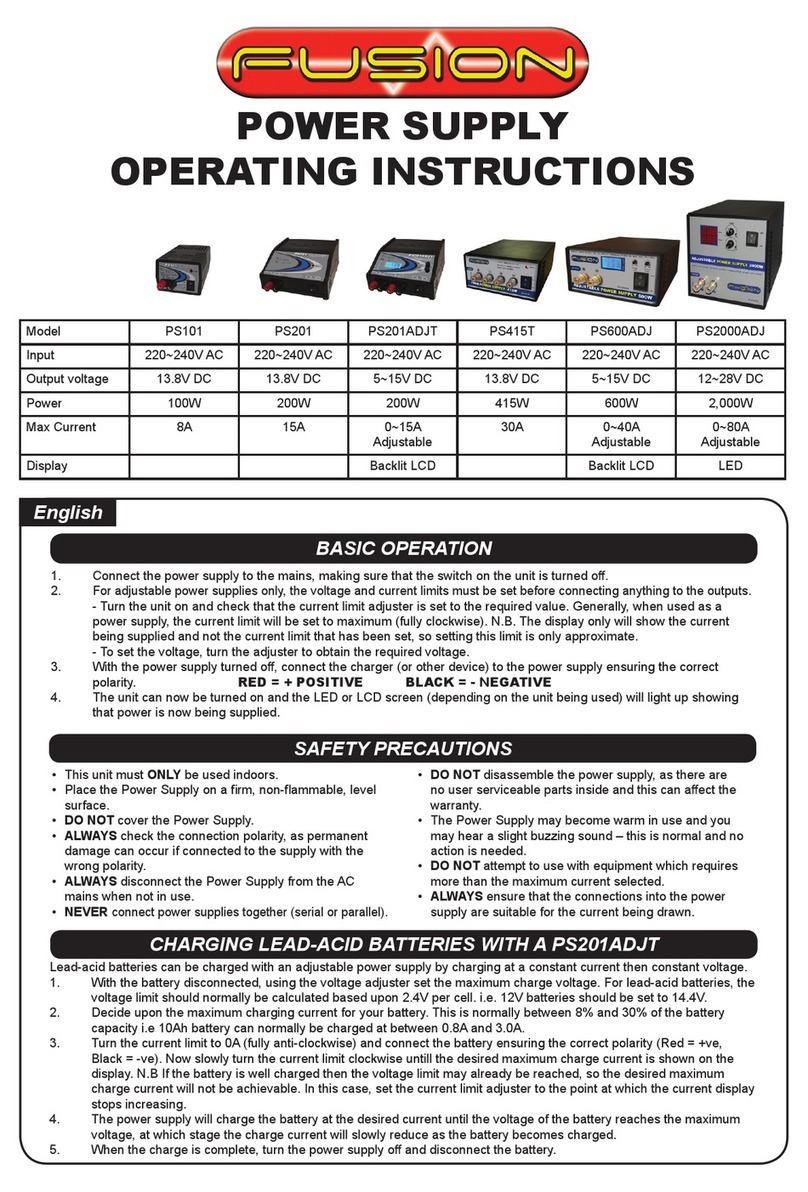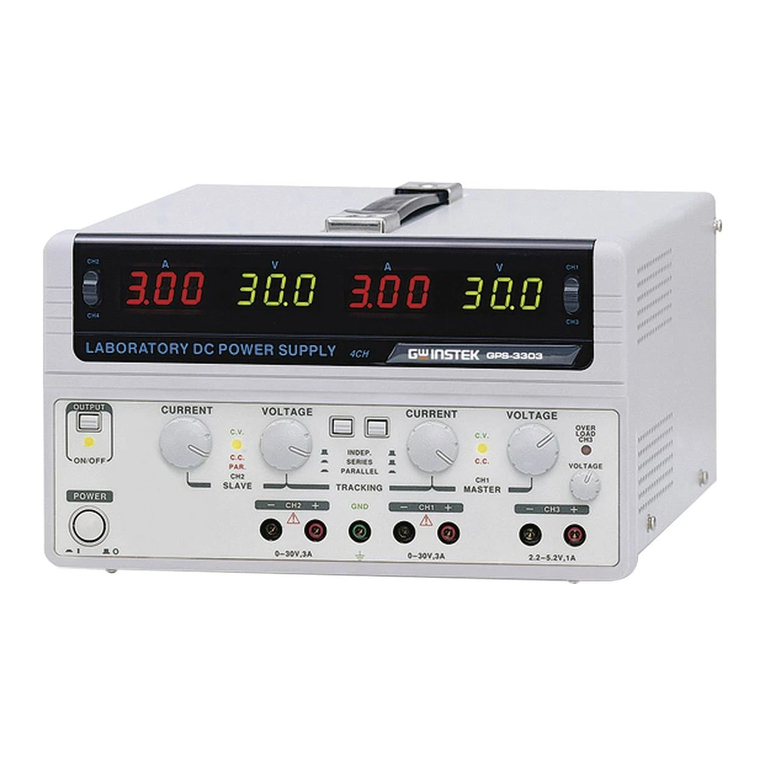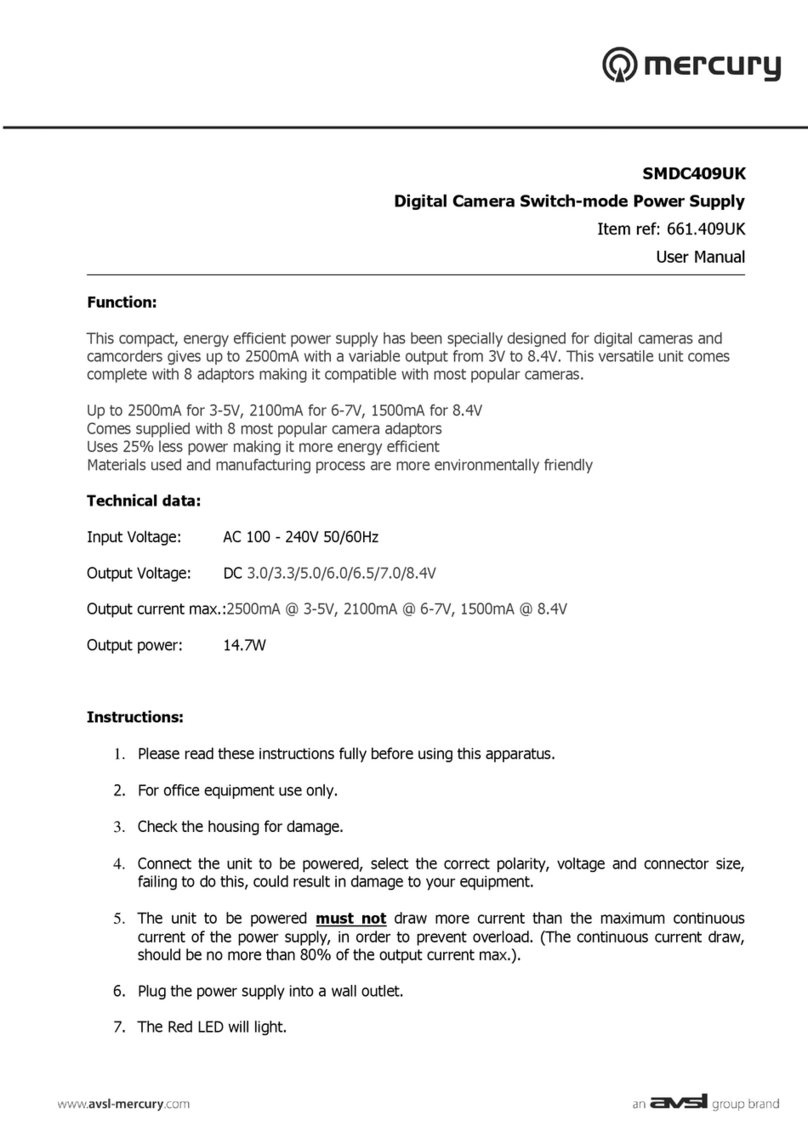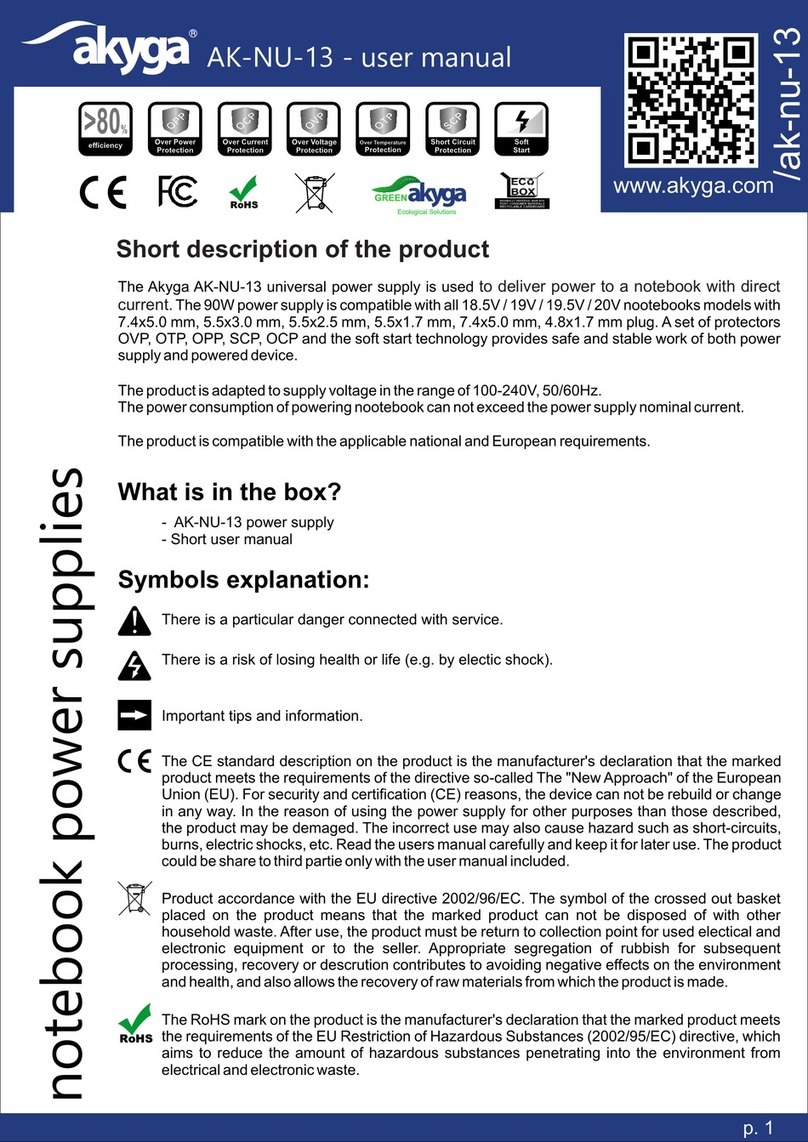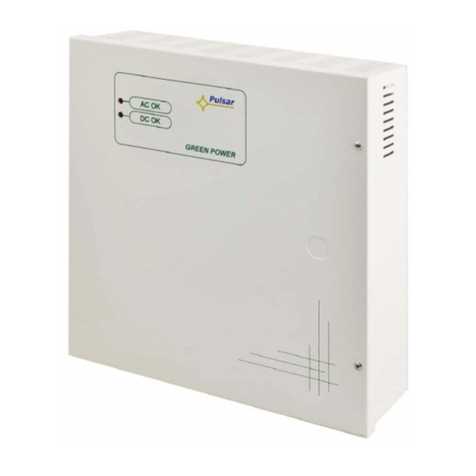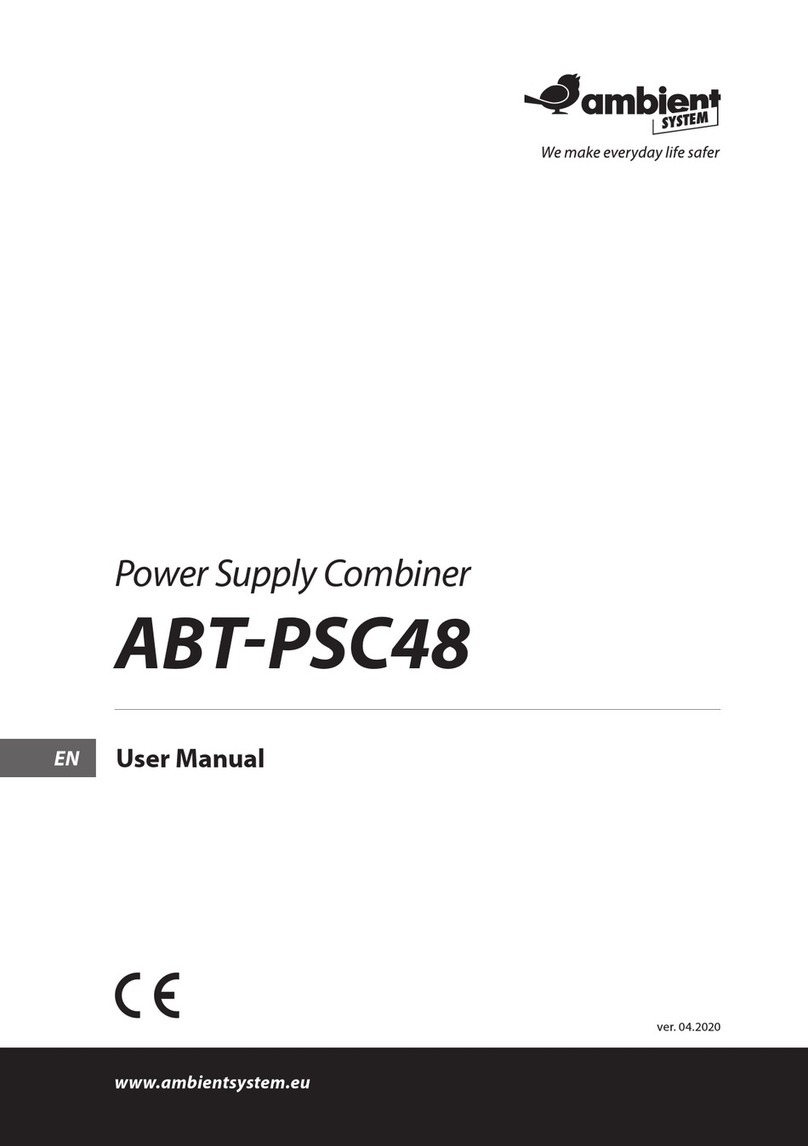High Voltage VLF Series Guide

Safety,Operation,andProcedureInstructionsfortheVLFSeriesof
ACHipots
Danger- Lethal Voltages:
Equipment to be used bytrained personnelonly
This Operator Manual contains instructions for the operation of a High Voltage power source. The operator of this equipment
must use good judgement and follow all safety precautions noted in this guide to ensure the protection of himself and others in
close proximity to the test area.Failure to follow the instructions could result in injury
or death. Proper grounding of the test set must be done prior to
connecting this unit to a powersource.
saMine
VLF-50CMF
SERIES
Please Refer to
Documentation
Before Operation

Last saved 4/16/2019
T:\DOCUMENTS\Manuals\VLF\MANvlf50CMF_Rf_2k15.doc
Very Low Frequency (VLF) AC High Voltage Testing - Operators Manual Addendum
Instrument Summary
This instrument is a Very Low Frequency AC high voltage test system – a VLF hipot. It is an AC hipot whose frequency
output is 0.1 Hz or lower, compared to the 50/60 Hz of a conventional AC hipot. The lower the frequency, the lower the
current and power it takes to test a capacitive load like a cable. At 0.1Hz, it takes 600 times less current and power,
compared to 60Hz, to apply an AC voltage to a cable or some other high capacitance load.
At 0.1Hz frequency output, one full cycle of the sine wave takes 10 seconds, 20 seconds at 0.05Hz, and 50 seconds at
0.02Hz. Even though each cycle of the waveform can take 10 seconds or longer, it is still alternating current – AC – and is
sinusoidal.
This is not a DC hipot and it does not operate in the same manner. When the voltage output is raised, the voltage will
climb to its peak and then descend back to zero. The output polarity of the set reverses (a solenoid switch can be heard)
and then climbs again in the opposite polarity. This rise and fall of the voltage is obvious on the voltmeter and is normal.
The current meter will also rise and fall as the cable charges and discharges every half cycle. Unlike DC, there are no
leakage currents to read. This is a go/no-go, or pass/fail, AC stress test. The load under test either withstands the test
voltage and passes, or it breaks down and fails.
Important note: Use the VLF test set properly. Test at the proper test voltage and time duration. Abbreviated tests or
tests at reduced voltage levels should not be performed. An improper test may aggravate cable defects that may cause
cable failure later in service.The proper test voltage and time duration are essential to allow the VLF to do its job.
Helpful Notes to Users
Peak Voltage: The Voltmeter on the VLF test set measures the Peak voltage. It is the peak output voltage that is used
during VLF testing. If your test specification indicates a test voltage in RMS, multiply by 1.414 to obtain the peak value for
the test. The IEEE400.2 chart indicating test voltages for different cable ratings shows both rms and peak. All other AC
hipoting using 50/60 Hz instruments is measured by the rms voltage, not VLF testing, so make sure this issue is
addressed.
Output Frequency: All VLF sets are rated by the uF of load they can test at a given frequency. The lower the frequency,
the higher the capacitance, or the longer the cable, can be tested. Always use the highest frequency possible. Testing
should be performed at 0.1Hz, unless the capacitance of the load is too high for the uF rating of the set at 0.1 Hz. It may
be necessary to reduce the frequency to 0.05, 0.02, or 0.01 Hz depending on the capacitance of the load. The load
capacitance can be measured using the capacitance meter of the VLF or be calculated, if the capacitance per foot or
meter is known. Example: At 0.1Hz, 1 – 2 miles of cable can be tested, depending on size.
Test Duration: The recommended test duration is 30 minutes as a minimum. In the body of this manual are reprints from
the IEEE400.2 standard discussing this issue and additional information on the subject. The longer the test duration the
better, as minor defects that triggered into partial discharge due to the test voltage will have time to grow through to failure
during the test. The duration indicated in the standard is based on using a frequency of 0.1Hz. If lower frequencies are
used, the test time must be extended. Rather than 30+ minutes at 0.1Hz, perhaps 60 minutes should be used at 0.05 and
0.02Hz.
Cable Failure Indication: When the cable fails, the thermal Overload on the front panel will pop up. Also, the Voltage and
Current meters will read erratically as the cable arcs. It may take several cycles of the voltage rising to the arc-over
voltage of the fault to cause the thermal overload to warm up enough to trip.
Know Your Test Equipment – Read the Operators Manual

Last saved 4/16/2019
T:\DOCUMENTS\Manuals\VLF\MANvlf50CMF_Rf_2k15.doc
TableofContents
About the Operator Manual 1
SECTION 1
General Information 2,3
Operating Environment 4
Safety Symbols 5
Features and Specifications 6
Controls and Indicators 7-9
List of Components 10
SECTION 2
Setting up the Equipment 11,12
Typical VLF Connection Scheme 13
Operating the Equipment 14-19
VLF Cable Testing Recommendations 20,21
Blank Page for Notes 22
SECTION 3
Performing Special Operations 23
Voltmeter Re-calibration 23,24
Current Meter Re-calibration 24
Weekly Maintenance 24
Yearly Maintenance 25
Return Materials 26
Warranty 27,28

OPERATOR MANUAL
- 1 -
AbouttheOperatorManual
Important
This Operator Manual describes the features and safe operation
of a High VoltageACTest Set.The instructions are intended to be
clear and simple, but the operator must be trained and qualified
according to the customer’s established procedures for the use of
this type of equipment.
This Operator Manual is organized to provide information on the VLF-50CMF in steps that
familiarize the new operatorwith theentire scope of operation ofthis testset.
Section 1:Specificationsand Controls.
Section2:SetupandOperation.
Section 3:Performing SpecialOperations.
TheFunctions,Features,andSpecifications oftheVLFSeriesofACHipotsarealsodiscussedintheVLF
BrochureavailablefromHighVoltage,Inc.

OPERATOR MANUAL
2
GeneralInformation
Thissectionfamiliarizestheoperatorwiththefeaturesandspecificationsof the
VLF Series ofVery Low Frequency AC Hipots manufacturedbyHIGH VOLTAGE, INC.
FeaturesandSpecifications
The VLF-50CMF hipot test set provides true sine wave AC output voltage for the test of high voltage
cablesandothercapacitiveloads.
StandardfeaturesoftheVLF-50CMF ACHipot
•Sinewave output, 0.1, .05, .02 and .01Hzfrequenciesstandard.
•Continuouslyadjustable outputvoltage
•Continuous dutyrating
•Fixed primary overload
•“ZeroStart”and ExternalInterlockprovision
•Single-range voltmeter
•Singlerange current meterwithcapacitancemeasuring scale fordeterminingbesttestfrequency
•Dualoperatingmode-Hipot/Burnforeitherhipottingwithan overload orburning with currentlimiting
•Three piecedesign, mountedon one trolley
•Transitprotectedmeter prevents damagebetweentestsitesin vehiclemountedinstallations
•20 ft.interconnect cableswith grounds
•DualCable reel with 100ft. of shieldedoutputcableandgroundcable
SECTION
1

OPERATOR MANUAL
3
•14”Safety Grounding Hook with 20ft.lead.
WARNING
DO NOT OPERATE THE VLF HIPOT SET IF THE HIGH VOLTAGE TANK IS 5
°
OR MORE
FROM LEVEL.
IF THE UNIT ISOPERATEDOUT OF LEVEL, OVERHEATING AND INTERNAL ARCING MAY OCCUR.
DONOT STORE ORTRANSPORTVLF HIGH VOLTAGE SECTION
ON IT’SSIDE

OPERATOR MANUAL
4
Operating Environment
Indoor/Outdoor-fair weather
Altitude: 100% of rating;Sea-level, up to 5000ft.(approx.1500M). The output power is
de-rated 10% above 5000 ft. altitude, 20% above 12,000 ft.( approx. 3600M), and
30% above 15,000 ft.(approx. 4500M)
Storage Temperature: -20°C to 70°C(-4°F to 158°F)
Operating Temperature: -5°C to 45°C(22°F to 113°F) Output power is de-rated
linearly by 15% from 30 to 45°C ambient.
Maximum Relative Humidity: 80% up to 31°C(88°F), decreasing linearly to 50% at
40°C(104°F)
Mains supply fluctuation: +/-10% of rated voltage
Installation: Category II
Pollution: Degree 2
WARNING
DO NOT OPERATE THE VLF HIPOT SET IF THE HIGH VOLTAGE TANK IS 5
°
OR MORE
FROM LEVEL.
IF THE UNIT ISOPERATED OUT OF LEVEL, OVERHEATING AND INTERNALARCING MAY OCCUR.
DONOT STORE ORTRANSPORTVLF HIGH VOLTAGE SECTION
ON IT’SSIDE

OPERATOR MANUAL
5
Safety Symbol Identification
Warning! Please refer to documentation before operation
Protective Earth Terminal
Warning: Hazardous Voltage

OPERATOR MANUAL
6
MODEL VLFAC HIPOT SPECIFICATIONS
VLF-50CMF( 50 kV,5.0 µF)
Input
230V+/-10%, 50/60Hz, single phase,30 Apeak,25A avg.
Sinusoidal Power Required for full output
Output
Sinusoidal0-50 kVacpeak, 0.1, .05, .02and .01Hzfrequency
Duty
Continuous
Test Capacitance
5.0µF @ .1 Hz,10.0µF @ .05 Hz, 25.0 µF @ .02 Hz, 50.0µ[email protected] Hz
Minimumcapacitancetoachievefulloutput-.01µF
Kilovoltmeter
3.5in., 0-60PEAKKILOVOLTS
2% FS Accuracy
CurrentMeter
3.5in.,0-200MILLIAMPERES/6-0uF
5% FS Accuracy
Remote Control Size
PowerSectionSize
High Voltage Tank size
Complete Trolley
17”w x 11”dx9.5”high –20lbs.
20”w x 14”dx 27”high–160lbs.
13.5”w x 19”d x 23”high–310lbs.
28”wx 60”d x51” high
CompleteTrolley
775lbs.(352kg)
Interconnect cablelength
Outputcable length
20 ft.
ShieldedX-Ray/Ground on reels-100FT.
Table 1 VLF-50CMFSpecifications.

OPERATOR MANUAL
7
OUTPUT
FREQUENCY
.05Hz .02Hz
.01Hz
.1Hz
BURN
HIPOT
OUTPUT
MODE
FAULT/RESET
POS
NEG
SCOPE
OUTPUT
EXT
INTLK
METER
MODE
uF mA
CAP
ZERO
CAPACITANCE
SCALE X10
X1
PUSH TO READ
CAPACITANCE
MEASUREMENT
HOT COM
MAIN
POWER
HIGH
VOLTAGE
RAISE
LOWER
OFF ON
TIMER
START
AC TEST SET VLF SERIES
PLEASE REFER TO
DOCUMENTATION
BEFORE OPERATION
Figure 1 VLF Series front panel controls.
MAIN POWER
The MAIN POWER neon lamp will light when the main power circuit breaker is on in the power section
andvoltageisavailabletotheinputterminals.
EXT.INTLK (EXTERNAL INTERLOCK)
The Ext. Intlk. connector is provided to allow for a normally open safety interlock switch to control the
energizingofthehighvoltageoutput.
FAULT/RESET
The FAULT/RESET pushbutton illuminateswhenthe primarycurrent in the powersection has exceeded
the maximum limit.Its delayed trip allows for the short term overload ofthe variable transformerwhile still
providingproper protection. Depressingthe pushbutton resets the circuit.
HIGH VOLTAGE ON/OFF
The HIGH VOLTAGE ON (OFF) pushbuttons activate (de-activate) the high voltage power circuits. The
LED indicators provide long life positive indication of the circuit status. The RED (ON) LED lights when
highvoltageisenergized,theGREEN(OFF)LEDlightswhenthehighvoltageisde-energized.

OPERATOR MANUAL
8
HIGH VOLTAGE- RAISE/LOWER
TheRAISE/LOWER controladjuststheoutputvoltage byraisingorloweringthemotorizedoutputcontrol
variable transformer. The OUTPUT PERCENT meter above the RAISE/LOWER control indicates the
relative position of the variable transformerwith respect tothe output voltage. Anautomaticreturn tozero
function at time of high voltage off ensures energizing of high voltage at zero. The control must be at
ZERO(0)toenergizethehighvoltagecircuits.The output control must always be returned to zero at
the completion of testing, prior to de-energizing the output , allow the unit to cycle for 60 seconds
to assure full discharge of the capacitance in the load.
VOLTMETER
The KILOVOLT METER allows for accurate output voltage readings. 1-% precision resistors minimize
the need for re-calibration due to aging shift. See Voltmeter Re-calibration in Section 3 for details on
calibration.
CURRENT/CAPACITANCE METER
The CURRENT/CAPACITANCE METER allows for output current readings. The CURRENT meter
portion of this circuit is for observing the charge and discharge currents in the cable load. 1-% precision
resistors minimize the need for re-calibration due to aging shift. The CAPACITANCE scale on this meter
is for measuring the load cable capacitance prior to test to determine the best operating frequency for
that particularcable run.
SCOPE OUPUT
The SCOPE OUTPUT allows for accurate output voltage monitoring. This connector can be fed into an
oscilloscope for the looking at the actual output wave shape. The peak voltage representing 50 kVac is5
voltspeak.
OUTPUT FREQUENCY
The OUTPUT FREQUENCY switch adjusts between calibrated frequencies for testing loads larger than
normal .By allowing slower frequencies the output waveshape is maintained. Output frequency choices
are.1 Hz for5.0µF, .05 Hzfor10µF, .02 Hzfor25 µF,and.01 for 50µFload capacitances.
OUTPUT MODE
The OUTPUT MODE is for choosing the operating mode of the overloads. When this control is in the
HIPOT mode, the overload will trip in case of an arc. When in the BURN mode, the overload is still
active. But, if an arc occurs, a reactor is switched into the primary line to limit primary current to the
maximumratingforthe unitallowing thefaultedcabletobeburnedtoa low impedancefault.Afterashort
is burnedinto thecable,conventionalfault locatingtechniques can be employed.

OPERATOR MANUAL
9
START TIMER
The START TIMER switch starts the dwell timer on the front panel to time test duration. The timer can
onlybestartedwhenhighvoltageisenergized.Thetimerisresetonlyafterthehighvoltageisoffandthe
START TIMER pushbuttonisdepressed.
To set the H5CX timer.
1) Press and hold ‘mode’ button for 3 seconds to enter program mode
2) Set the time range using the ‘up/down’ push buttons (default30min 00 sec)*
3) Set the timer mode using the ‘up/down’ push buttons (default down)*
4) Set the timer output mode using the ‘up/down’ push buttons (default F)*
5) Set input signal width using the ‘up/down’ push buttons (default 20mS)*
6) Set key protect level using the ‘up/down’ push buttons (UP-1)*
7) Press and hold ‘mode’ button for 3 seconds to exit program mode
*press ‘mode’ button brieflyafter adjusting each parameter to move to next step
METER MODE
The METER MODE switch configures the current metering circuit for capacitance measuring or for
outputcurrentmeasurement.
CAPACITANCE (PUSH TO READ X1) PUSHBUTTON
The PUSH TO READ X1 pushbutton changes the scale of the CAPACITANCE metering. The modified
Wheatstone Bridge incorporated in this circuit indicates x10 readings without depressing the PUSH TO
READ X1 pushbutton. When in the x10 scale and the reading is below 6
µ
F, the PUSH TO READ X1
shouldbe depressedtogetan accurate load capacitance measurement.
CAP ZERO
This potentiometer is for zeroing the capacitance range at full scale prior to measuring the cable
capacitance.
CAPACITANCE MEASUREMENT POSTS
These posts are for connecting the cable to the capacitance measuring circuit. The HOT post is for the
cable center conductor, the COM post is for the cable's grounded shield. Be sure the cable is de-
energized before connecting this low voltage circuit or damage will result. The resulting capacitance
measurement on the cable will identify the best operating frequency for that particular cable run. A
frequency table is provided in the section OPERATING THE EQUIPMENT.

OPERATOR MANUAL
10
List of included componentswith theVLF Hipot
Ext.Intlk.jumperplug
10 ft.interconnectcable withgrounds powersection to HVtank.
20 ft.interconnect cable power sectionto control box
6ft.BNCtoBNC coaxcable-scopetopanelinterconnect
20 ft.red and blacktestleads forcapacitancemeasurement
SafetyGround Hookwith20 ft.lead

OPERATOR MANUAL
11
SETTINGUPTHEEQUIPMENT
The setup of this equipment has been minimized by consideration of the operator during design. The
VLF-50CMF three-piece construction mounted on one trolley relieves the usual installation and mobility
obstaclesforAC testinginthefieldorina sub-station.
Select a level location for the unit that will allow easy hook-up to the test cable. The cooling and
filter assembly of the VLF series will not operate properly if the high voltage tank is placed on uneven
ground. A maximum angle for correct operation is 5°. Blocking the trolley to a level condition is
acceptable.
1. Be sure that all the controls are off,in their de-energized or fully counterclockwise
position.
2. Secure ground leads to the high voltage tank brass stud, and the power
section brass stud. The Ground leads should be of sufficient ampacity to carry any
expectedfaultcurrentsfrom the loadcable.
3. Secure the interconnect cables from the power section to both the control
and the high voltage tank. These connections are likely done once upon receipt,
the correct mating is as follows:
RC J1 to PS J1 PS J5 to T J1(power)
RC J2(BNC) to PS J2(BNC) PS J6 to T J2(cooling)
RC J3(BNC) to PS J3(BNC)
RC J4 to PS J4
RC= Remote Control, PS =Power Section, T = Tank
All Connections must be made to operate thisunit.
4. Insert the coaxial output cable into the high voltage output connector on
the tank. Tightentheclampingnut securely.
SECTION
2

OPERATOR MANUAL
12
5. Insert the EXT INTLK plug into the socket on the control panel.The plug may
alsobe wiredtoa normally opencontactof a safetyswitch foradded protection.
The setup of the VLF AC Test Set does not address the need for proper safety grounding of
the test cable load. The identification and disconnecting of cables from service and the
subsequent verification of the cables being de-energized may vary for different types of tests
or setups. Please consult the local codes where applicable or reference the guidelines
providedby your employerfor maximumsafety.
Operation of the Timer In the VLF
The Dwell Timer included in our VLF Series of AC Hipots will function as an
end of test alarm only. The timer will start upon initiation of the high voltage and
depression of the START TIMER pushbutton. The timing function will count up to the
preset value. Upon reaching the dwell time, an alarm will sound indicating the need
to return the Output Control to zero and turn off the high voltage, as noted in the
Operating Manual, by allowing the output discharge solenoids and polarity solenoids
to cycle at least ten more seconds (one full cycle).
The timer supplied will be settable from .1 second to 10 hour increments. The
timer will reset when the high voltage turns off by depressing the START TIMER
pushbutton.
Note Regarding use of MCconnectors:
The MC connector requires the operator to push IN before pulling OUT to disconnect.
It should be noted that the VLF series test sets are not intended to be used
on vacuum bottles or switchgear without cables connected. The VLF
requires a minimum of .01uF load capacitance to achieve full output. If the
capacitance of the load is too low, the kilovolt meter will not read the actual
peak output anddamage to theunit (and/or load) may result.

OPERATOR MANUAL
13

OPERATOR MANUAL
14
OperatingtheEquipment
This section provides step-by-step instruction on various test methods. Many facilities have their
own in-house test procedures, and this manual is not to supercede these. The purpose of this
sectionistoexplain thecapabilitiesof thistestsetinreal-worldapplications.
When testing cables, either single or three phase, there are certain extra steps that must be observed to
ensure safeoperation.
It should be noted that the VLF series test sets are not intended to be used
on vacuum bottles or switchgear without cables connected. The VLF
requires a minimum of .01uF load capacitance to achieve full output. If the
capacitance of the load is too low, the kilovolt meter will not read the actual
peak output and damage to theunit (and/or load) may result.
AC Cable InsulationTesting
1. Ensure that all the steps listed in Setting up the Equipment have been accomplished. Take
specialnotetogroundthepowersectionandthehigh voltagetanktoasolidearthground.
Caution!!
Before making any cable connections,ensure that the cable
being tested has been properly identified, de-energized, and
grounded!
2. Make sure that all insulators, stress cones, and pot heads are clean and free of moisture.
This willpreventflashoverand minimize leakage.
3. Isolate the far end of the conductors under test for the test voltage; that may mean
separating some of the conductors in a multi-conductor cable from each other and their
shields.
4. Any conductors or wires in the cable or the vicinity not being tested must be grounded to
avoidabuildupofchargeandpossibleshockhazard.
5. Voltage must be applied according to specifications from the cable manufacturer or any
otherapplicableteststandards
6. Prior to connecting anything to the test sample, be sure the test sample is identified, de-
energizedandgrounded.

OPERATOR MANUAL
15
7. First, the cable capacitance must be measured to determine the best operating frequency.
Placethecontrolnearthecablebeing tested.
8. Connectthe input power terminal block to a grounded 230 v (+/-10%), 50/60 Hz source. A
generatorisanacceptablepowersource.
9. Turn on the main circuit breaker. The MAIN POWER light will illuminate at both the power
section andthe control.
10. Operate the METER MODEto
µ
Fposition. Adjust the CAP ZERO for full scale deflection
(ZERO) on the meter.
11. Connect the HOT post to the center conductor of the test cable. Connect the COM post to
thegroundedshieldofthetestcable.ReadtheCAPACITANCE scale(x10).
12. If the reading is below 6.0µF (about 6 divisions on x10 multiplier) depress the x1
pushbutton.Then following tableprovidesoperating frequencyversus capacitance.
Capacitance
Frequency
5µF orless
.1 Hz
10µF orless
.05Hz
25µF orless
.02Hz
50µF or less
.01Hz
13. An oscilloscope (optional) can be connected to the SCOPE OUTPUT on the control for
waveshape monitoring.Theoscilloscopeshouldbeproperlygroundedandtheinputshould
be set to 1 volt/ division, the time base should be 5 seconds/division and the trigger should
be set to roll display to view the wave shape. An oscilloscope with signalmemory displayis
best used for this application. A BNC to BNC shielded jumper should be used for
connection between the SCOPE OUTPUT and the oscilloscope. A digital meter can be
used to monitor this connector. The voltage feedback calibration for this connector is 1 volt
for 10 kVofoutput.
***CAUTION***
POTENTIALLY LETHAL
VOLTAGES MAY BE PRESENT

OPERATOR MANUAL
16
14. Uncoil the GROUND CABLE from the reel assembly and connect to a solid station ground.
Clampsecurelyto the trolleygroundclamp.
15. UncoiltheHV Output cablefromthe reeland connecttheoutputlead to the test sample. Be
sure that there is enough clearance to grounded objects for the expected test voltage. The
minimum clearance inairis 10 kV ac/inch.
16. Place the OUTPUT MODE in the HIPOT position
17. With the OUTPUT control at zero (zero start interlock engaged), depress the HV ON
pushbutton. The HV ON light will glow. At this time the pump and fan on the high voltage
section willalsoenergize.
18. Increase the output by operating the HIGH VOLTAGE control to the RAISE position until
the desired output voltage is reached. Raising the output too fast with large capacitive loads
may trip the output overload. Observe the OUTPUT PERCENT meter to rough in the set
voltage. Please recognize that the output cycle is: 100 seconds for a full sine wave @.01
Hz, 50 seconds fro a full sine wave @ .02 Hz, 20 seconds for a full sine wave @ .05 Hz,
and 10 seconds for a full sine wave @ .1 Hz. . To set the output voltage you may need
morethanonecycletoreadtheoutputaccurately.
19. Maintaintheoutputvoltageforthetesttimespecifiedinyourstandardprocedures.
20. After the test is complete, depress the HIGH VOLTAGE control in LOWER position,
allowing the load to return to zero and the unit to cycle for about 60 more seconds prior to
depressing the HV OFF pushbutton. Allowing the unit to cycle for some time allows for the
complete discharge of the load and avoiding the normal self recharge that capacitive loads
will exhibit.
21. If the test sample fails during the test, the overload circuit will de-energize the high voltage.
Shouldan overloadoccur,thenormalsinewavecycleisinterruptedandtheloadmaybleed
downmuchmoreslowlythanwhen theunit iscyclingnormally.DepresstheFAULT/RESET
pushbuttonto resumetesting.,
22. Prior to removing the output cable from the load, observe that the outputvoltmeter is
at zero, and then use a GROUND STICK to positivelyground the test sample.
It should be noted that the VLF series test sets are not intended to be used
on vacuum bottles or switchgear without cables connected. The VLF
requires a minimum of .01uF load capacitance to achieve full output. If the
capacitance of the load is too low, the kilovolt meter will not read the actual
peak output and damage to theunit (and/or load) may result.
Other manuals for VLF Series
1
This manual suits for next models
1
Table of contents
Other High Voltage Power Supply manuals

